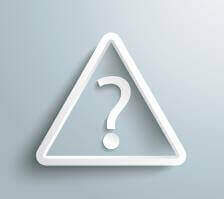How to Calculate the Area of a Triangle
What’s the area of a triangle? Half its base times its height, right? Indeed, that’s the formula. But why? Keep on reading to learn the secret behind this famous formula for the area of a triangle.

But the truth is that you didn’t really need to memorize that formula. Not because it’s not a useful formula to know—triangles show up all over the place and knowing how to calculate their area is extremely useful—but because you already knew how to do it…you just didn’t know it.
What exactly am I talking about? How could you have known something that you hadn’t yet learned? Stay tuned because that’s exactly what we’ll be talking about today.
Sponsor: This episode is brought to you by NatureBox. Discover smarter snacking with a new NatureBox each month. Get your first box FREE when you go to NatureBox.com/qdt.
The Triangle Area Formula
The area of a triangle is equal to half the length of the triangle’s base times its height. No matter what the triangle looks like, how big or small it is, always and forever.
The base of the triangle is simply any one of its three sides—you get to choose.
What do we mean by base and height? The base of the triangle is simply any one of its three sides—for most triangles any side will do, so you get to choose. Once you’ve chosen a side for the base, you need to draw a line perpendicular to it that intersects the vertex where the other two sides of the triangle meet. If doing that for the base you’ve chosen on your particular triangle is impossible, you need to try another side for the base. The length of this line is the height of the triangle.
Makes sense, right?
If you draw a few triangles and stare at them for awhile, you’ll see that no matter which of the three sides you call the base, the line perpendicular to the base extending to the opposite vertex is always the corresponding height of the triangle. And it turns out that the area of the triangle is always half the length of its base times that height.
But why is that?
Right Triangle Areas

To understand where this formula comes from, start by thinking about right triangles. As you’ll recall, a right triangle is a triangle that has one 900—aka, “right”—angle. Imagine drawing one of these right triangles with one leg—which we’ll dub its base—aligned horizontally, and the other leg aligned vertically. Its third and only slanting side as we’re looking at things is called the hypotenuse.
So what’s the area of this triangle? As always, it’s half the triangle’s base times its height. In this case, the base is just the length of the horizontal leg, and the height is just the length of the vertical leg. No big surprise…yet.
Rectangles and Right Triangles
Now let’s do something tricky. I want you to imagine making a copy of this triangle, spinning it half-way around, and then nestling it up hypotenuse-to-hypotenuse with the original triangle.What does the resulting picture look like? Well, the two triangles form a perfect rectangle. And what’s the area of a rectangle? It’s simply the width of the rectangle times its height.
The triangle makes up exactly half the area of the rectangle.
In this case, the width of the rectangle is the same as the base of the triangle. And the height of the rectangle is the same as the height of the triangle. So the area of the rectangle is equal to base x height. But look at that—the triangle makes up exactly half the area of the rectangle. Which means that the triangle’s area must be 1/2 x base x height. Which is exactly what the area formula tells us.
See, kinda obvious once you see it, right?
Rectangles, Triangles, and Area
But what about regular old non-right triangles? Why is it that their area is also equal to half their base times their height? Time for another trick.
Start by picturing a lovely symmetric triangle whose base is sitting horizontally in front of you and whose two sides each slope towards one another to meet at some point above the base. Now draw a line representing the height of the triangle which (as usual) extends from that point down to the base.
What does this picture look like? The “height” line you’ve just drawn has split the triangle into two smaller right triangles. If you play around for a few minutes drawing some triangles, you will see that you can always play this kind of game and turn any non-right triangle into several smaller right triangles.
The good news is that you already know why the area of a right triangle is half its base times its height—its because a right triangle takes up half a rectangle! And, here’s the best part: This is also true for each and every one of the smaller right-triangles you get when you break up non-right triangles. The mini-rectangles that circumscribe these smaller right triangles combine to form one larger rectangle that circumscribes the entire triangle. Which is precisely why the area of every single triangle—no matter its shape or size—is always 1/2 x base x height.
 Wrap Up
Wrap Up
OK, that’s all the math we have time for today.
Please be sure to check out my book, The Math Dude’s Quick and Dirty Guide to Algebra. And remember to become a fan of The Math Dude on Facebook, where you’ll find lots of great math posted throughout the week. If you’re on Twitter, please follow me there, too.
Until next time, this is Jason Marshall with The Math Dude’s Quick and Dirty Tips to Make Math Easier. Thanks for reading, math fans!
Geometry formulas and triangle images courtesy of Shutterstock.
You May Also Like…




 Wrap Up
Wrap Up

